Critical Procedures: How to Create a Pericardiocentesis Model
Tue, 10/13/2020 - 2:56am
Editor:
- Check out the paper and follow along with it for exact amounts of ingredients!

- Pour gelatin into cold water: I found this better than adding water to the powdered gelatin which makes messy clumps of solidified gelatin
- Pro tip: order a large container of gelatin on the internet. Grocery stores sell it in small packets and you need a ton of them, which is a pain!
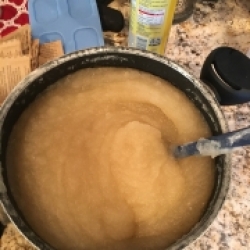
- Yummy! The gelatin is in a thick grits-like consistency. Put in the fridge to cool.

- Insert golf ball and some red food dye into punching balloon and slip the end of the balloon over the tap to fill.
- Pro tip: Do not overfill...if the balloon is too big it won't fit completely surrounded inside the gelatin mold and the whole thing will fall apart with a few needle sticks.
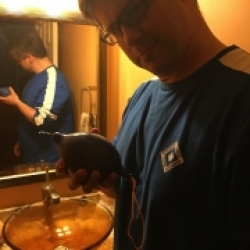
-
About this size, maybe a little smaller

- Heat the gelatin on a stovetop until thoroughly melted. Use a candy thermometer to ensure temp doesn't go above 130 degrees
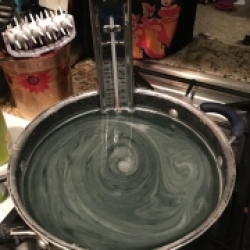
- Melted with food dye added (Dye makes the model opaque so you can't see the balloon inside the gelatin mold)
- Pro tip: add betadine if you want the model to last longer than a single session...it prevents mold from growing
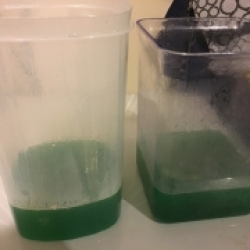
-
Spray inside of containers with non-stick spray. Add a few inches of gelatin to make the base of the model
- Pro tip: cool this in the freezer instead of the fridge. It took over an hour to firm up in the fridge!

- Skewered punching balloons

- Wedge the skewer inside the container with the balloon resting on top of the solidified gelatin base
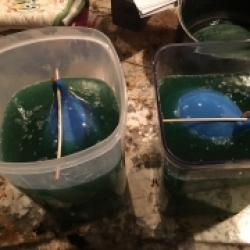
- Fill with the liquefied gelatin to just below the level of the skewers
- Put back in the freezer and wait...it took about another hour for this to solidify
- Pro tip: the gelatin mixture remaining in the pot will stay warm off the heat but you will have to turn the burner on periodically to keep the temp high enough to prevent it re-solidifying
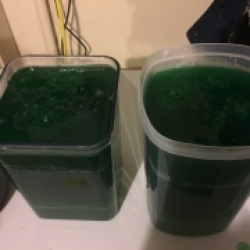
- After the gelatin hardens, remove the skewers, fill the containers to the brim with remaining gelatin, and put back in the fridge overnight
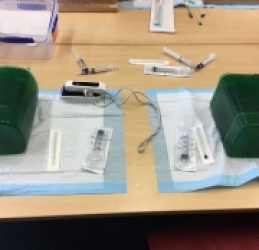
- Ready for action! All you need are some spinal needles (22 g preferable to minimize damage with each puncture), a syringe, and an ultrasound machine
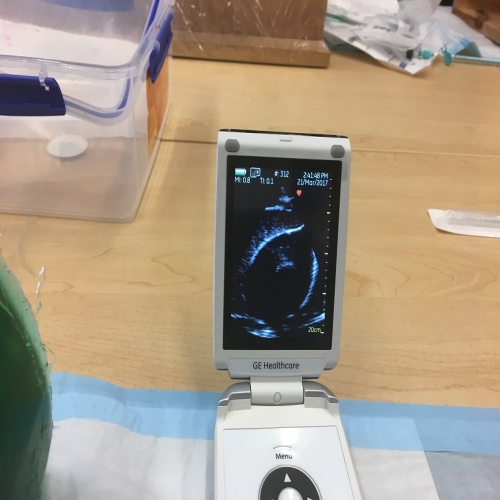
- US image: the golfball gives a hyperechoic edge which simulates the ventricular wall
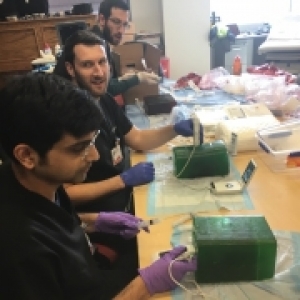
- Our oustanding Cooper Critical Care Fellows get some hands-on training in ultrasound guided pericardiocentesis
- It is highly suggested that this procedure be done under direct ultrasound guidance. The era of blind land-mark technique should go the way of the blind IJ central line.
- For a great review of ultrasound guided pericardiocentesis, check out The Ultrasound Podcast video: http://www.ultrasoundpodcast.com/?s=pericardiocentesis
